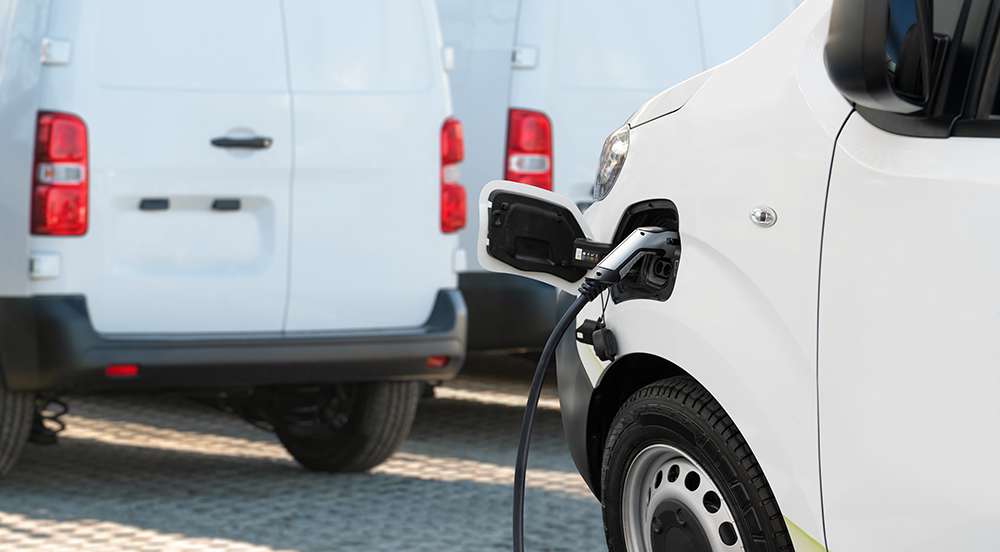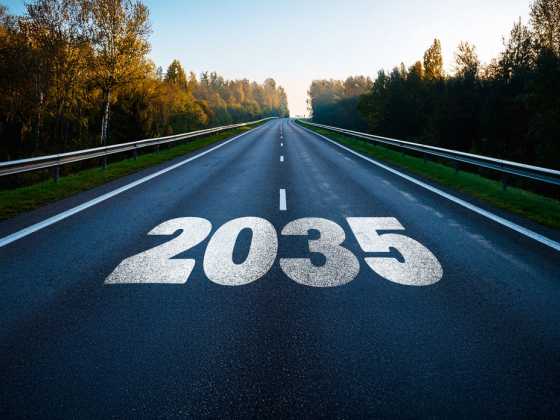Changes to 4.25 tonne electric van operating rules

The government has announced changes to the operational requirements of heavier zero-emission vans, up to 4.25 tonnes. We look at these changes, and examine if more needs to be done to remove barriers to e-van uptake
The government has announced changes to the operation requirements of heavier zero-emission vans, up to 4.25 tonnes. This follows a special concession that allowed drivers with a standard B licence to drive an electric van up to 4.25 tonnes, due to the extra weight of the battery.
While the flexibility this gave was well received, questions were raised as to whether other operator responsibilities that normally apply to vans over 3.5 tonnes – such as additional training – still applied.
Additional requirements
Vehicles up to 4.25 tonnes would normally requires a driver to have a category C or C1 licence. This involves additional costs for the user, including further training and testing, medical examinations and a driver certificate of professional competence (DCPC) if the vehicle is intended to be driven for commercial use.
But despite the extra weight in electric vans, these vehicles are equivalent in function and appearance to large petrol and diesel vans. As more 4.25 tonne electric vans came to market, the Association of Fleet Professionals pointed out that a situation had emerged whereby the government’s Office for Zero Emission Vehicles (OZEV) believed the vehicles had been deregulated from all of the operator responsibilities that normally apply to vans over 3.5 tonnes, whereas the DVSA and the Department for Transport believed some still applied.
Paul Hollick, chair at the AFP, said that this led many of its members to cancel orders for 4.25 tonne electric vans because of ongoing lack of clarity about the additional requirements surrounding them.
Paul said at the time: “Fleets are receiving all kinds of conflicting advice – not just from OZEV and the DVSA but manufacturers, dealers, leasing companies and others. They’re understandably throwing their hands up in the air and we hear of many operators simply cancelling orders.”
Government consultation
In summer 2022, the government consulted on the reforms to the driving licence flexibility. What resulted was the decision to amend certain aspects of the legislation, such as to remove the training requirement, expand the flexibility to all eligible vehicles, allow vehicles to tow an equal amount to their ICE equivalent, and only allow zero emission vehicles to access the flexibility.
Only zero-emission vehicles
The current licence flexibility legislation is for alternatively fuelled vehicles, which includes natural gas and biogas. However, as these are not zero emission fuels, the government will now legislate to only allow zero emission vehicles to access the licence flexibility.
Training requirement
Currently, a category B licence holder must undertake five hours of additional training before being permitted to operate AFVs weighing between 3,500kg and 4,250kg on public roads. This requirement does not apply to equivalent ICE vans, which fall under the 3,500kg threshold.
The consultation sought views on removing or reforming the training requirement to remove this additional regulatory step, and seventy-two per cent supported the removal.
The government said that the consultation did not provide any evidence to demonstrate a material safety risk from allowing category B licence holders to operate slightly heavier vehicles. And users of the licence flexibility did not report any differences between accident rates for their 4,250kg AFVs and 3,500kg ICE vans.
Most respondents noted the disincentive of the additional cost of the training, which is a particular concern for fleet operators with high driver turnover.
With all this in mind, the government has concluded that it will legislate to remove the training requirement. However, the DfT has said it will continue to work with the DVSA, industry and other parts of government to communicate information drivers need to operate an AFV safely and responsibly, particularly in relation to safe loading and vehicle handling techniques.
Types of vehicles
Currently, the licence flexibility only applies to vans carrying goods and does not include any other vehicle types, such as minibuses. This is because the flexibility was introduced to ensure that goods vans did not need to reduce their available payload when switching to AFVs.
However, increasingly, other types of vehicles are becoming available as ZEVs, of which many have additional weight requirements (such as wheelchair accessible equipment). The extra powertrain weight can limit which drivers can operate these vehicles without further training and a higher licence entitlement.
The government consulted on expanding the types of vehicles which are eligible for the licence flexibility. Seventy-five per cent of respondents supported making more vehicles eligible.
To account for the weight of specialised equipment needed for disabled users, such as a wheelchair ramp, category B licence holders are currently allowed to operate vehicles up to 4,250kg. Respondents highlighted the importance of maintaining this allowance despite any other licence changes. The government will legislate to allow category B licence holders to operate ZEVs up to 5,000kg MAM to account for the weight of the clean powertrain and the use of specialised equipment needed for disabled users.
The government will also legislate to extend the licence flexibility to all vehicle types to support the transition to zero emissions. This will only apply to ZEVs which would weigh 3,500kg or less without the extra weight of their clean powertrain.
Towing a trailer
Category B licence holders who passed their test before 1 January 1997 may drive a vehicle and trailer combination up to 8,250kg MAM. Recent changes to B+E licence entitlements mean that those who passed their test after 1 January 1997 can now tow a vehicle and trailer combination up to 7,000kg MAM without needing to take a further test. The DVSA recommends car and van drivers complete accredited trailer training before they tow for the first time. It also recommends the scheme for those drivers who tow regularly, as a chance to refresh and formalise their practical experience.
The current AFV licence flexibility for vehicles weighing between 3,500kg and 4,250kg does not allow category B licence holders who passed their test after 1 January 1997 to tow a trailer.
Respondents were supportive of the 7,000kg limit for vehicle and trailer combinations, with 72 per cent in favour. Many highlighted the disparity in towing rules following the recent changes, noting that this could disincentivise ZEV uptake.
Accordingly, the government will legislate to allow category B licence holders operating ZEVs weighing between 3,500kg and 4,250kg to operate a vehicle and trailer combination up to 7,000kg MAM. This change will only apply to category B licence holders who would be eligible to tow up 7,000kg MAM without the extra powertrain weight in line with recent changes to B+E entitlements. The ZEV must still not exceed 4,250kg. All existing conditions applying to specific vehicles, such as separate towing licences for minibuses, will continue
to apply.
More needs to be done
Despite these changes to the operational requirements for heavier electric vans, there is still different rules regulating their use. As an electric van weighing more than 3.5 tonnes is still classed as a HGV, it therefore requires an MOT test after 12 months.
It is also speed restricted, and tachograph regulations come into effect if the vehicle travels more than 100kms from base.
Further campaigning is therefore being done for electric vans up to 4.25 tonnes to be treated exactly the same as petrol or diesel vans weighing up to 3.5 tonnes.
Commenting on the announcement, Gerry Keaney, BVRLA Chief Executive, said: “The BVRLA remains committed to driving more positive change in this space and has pushed for the MOT regime to consider similar flexibilities for heavier zero-emission vans. Our work with partner associations is accelerating to make sure all levels of Government understand the need for renewed focus on the transition to
ZEV vans.”






